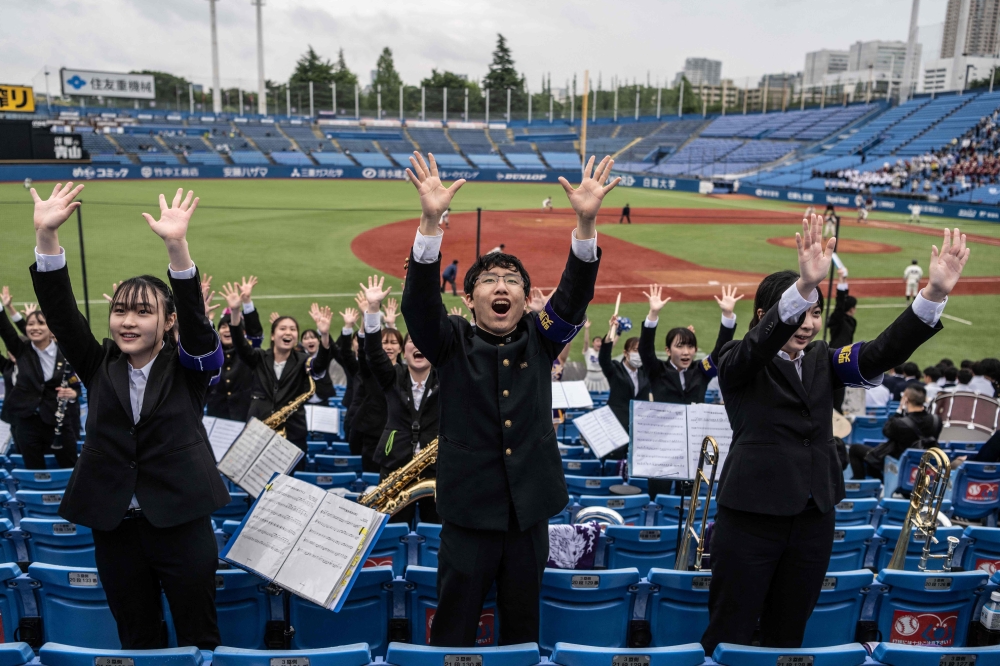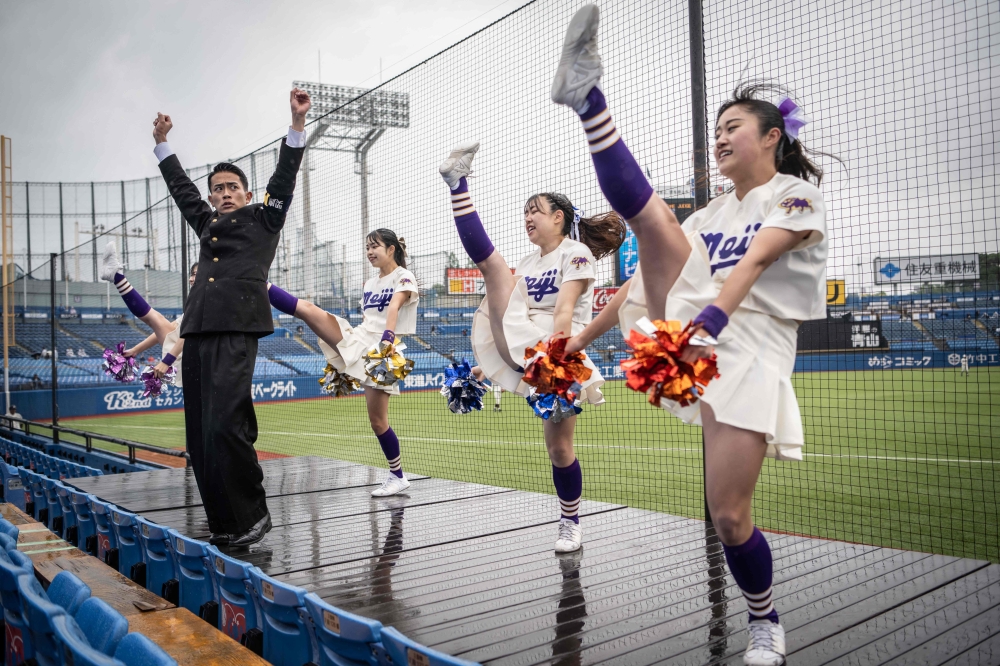TOKYO, July 14 — They are drenched in sweat, their hands bloodied from clapping, and their voices hoarse from shouting — meet Japan’s predominantly male and unashamedly macho “leadership section” cheerleaders.
The cheerleaders are part of a century-old tradition that some fear faces an existential crisis, with fewer students showing an interest in the hardcore art form.
And now there is a push for the squads and their counterparts in Japan’s traditional “oendan” cheering groups to be registered as part of the country’s “intangible” cultural heritage.
The “leadership section” cheerleaders are a formidable sight. Dressed in old-fashioned school-style uniforms, they are a mass of black at college baseball games as they belch out chants, bang taiko drums and thrust their fists in rigid, martial moves.

“We give it our all to the point of ridiculousness, and that’s what makes us so cool,” said Taisuke Ono, 21, a member of a squad at Tokyo’s Waseda University.
“Even if we’re trailing by 10 points and there’s almost no chance of a comeback, we somehow manage to convince ourselves we can still win.”
Squads like Ono’s typically perform alongside brass bands and American-style, mostly women cheerleaders — a triumvirate known as “oendan” or “rooters”.
But the men-dominated “leadership sections” have seen their ranks shrink at a pace that far outstrips their counterparts, with around a dozen groups disappearing over 15 years, according to one survey.
Pandemic-era bans on shouting and restrictions on crowds only deepened the malaise.
Alarmed by the situation, dozens of universities joined forces last year in a campaign to win designation of the tradition as an “intangible cultural property”.
The label is awarded by Japan’s culture minister to activities seen as having unique importance, like calligraphy and traditional sake brewing.
Campaigners say the recognition would increase the squads’ prestige and encourage fresh recruits, while activities that have obtained the distinction in the past have been awarded government subsidies.
‘Emperor’ and ‘slaves’
“We’re now at a phase where the culture is about to vanish,” said Jun Tochimoto, who has spearheaded the campaign.
“At the heart of what these cheerleaders do is the idea that they’re training and improving themselves through the art of cheering — that’s the mindset we hope will be preserved,” he said.
The decline began in earnest several decades ago, with potential recruits scared away by macho images and rumours of hazing.
A holdover from Japan’s Meiji period (1868-1912) counterculture, the squads are said to have been infused with a military style by students who were demobilised after WWII.
A draconian hierarchy prevailed in post-war years, with senior-year students deified as the “emperor” and freshmen roughed up as “slaves,” recalled Hiroshi Imazu, a 1970 graduate of Tokyo’s Chuo University.
They were sometimes even tasked with battling left-wing students whose activism paralysed some universities, the former squad member recalled.
“We were basically a bunch of students who felt proud that the reputation of our university was on our shoulders,” the 76-year-old said.
That school pride occasionally led to full-on skirmishes between swaggering cheerleaders from rival universities.
Those historical behaviours have created persistent “negative perceptions” about the squads, a report by an alumni group said in 2018.
But most universities now brook no such violence, and recent decades have seen a change many once thought impossible: Women recruits.

Today, women dressed in the black uniforms — called “gakuran” — perform alongside male teammates, sometimes as group leaders.
“I didn’t want to blindly accept social expectations about how women should live... and I wanted to see how far I could go in this male-centric community,” Kazuha Nagahara of Tokai University, 22, told AFP.
‘Anybody can be a star’
Women are “breathing new life” into struggling squads, she said.
“I think it’s providing a path for their survival.”
Violence might no longer be acceptable, but asceticism and stamina remain core values for the groups.
At Tokyo’s Meiji University, junior cheerleaders spend so many hours bashing their hands together to perfect their claps, they can come away with bloodied palms.
And training is supervised by glaring seniors who pepper their teammates with shouts and haranguing, though their stern demeanour gives way to smiles and bows when talking to spectators and visitors.
The groups are motivated by the spirit of “annihilate yourself, serve others”, said 50-year-old Yasunori Sugaya, a former Meiji squad member who now coaches the group.
It is an ethos passed down to current Meiji captain Motomichi Tanaka, 21, and his contemporaries.
At a recent baseball match, he stood to attention throughout a downpour that stopped play, rallying to keep spirits up among fans.
“Part of me does fantasise about having a more fun, leisurely campus life,” said a chuckling Tanaka.
But unlike other sports, where physique and natural talent are a big factor, “anyone who wants to do their best and be cool can be us,” he said.
“Anybody can be a star... I’m proud of what I do.” — AFP






















